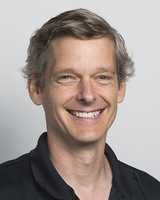Date:
Location:
PPT Presentation Slides
Measuring Student Learning Through Solution Diversity
 Chris Rogers, PhD
Chris Rogers, PhD
Professor and Chair
Mechanical Engineering
Tufts University
Overview:
We continually assess our students based on their ability to replicate our thinking - can they get the right answer (solution diversity of 0)? But what happens when you instead start to measure their ability to think for themselves? That requires questions (or problems) that do not have a right answer but instead can be solved in many different ways (a high solution diversity). In fact, we find the greater the diversity of solutions, the more evidence the students must present to support their ideas. It forces them to strike a balance between many different parameters of success - and find reasons to support that balance. So how can we quantify that diversity? How can we infer student learning and student knowledge from their products? Can we use this measure to assess the effectiveness of our course design projects at teaching engineering thinking? These are all things we are currently playing with at Tufts and I will share some of our preliminary thinking.
Biography:
Chris Rogers earned his B.S., M.S., and Ph.D. in mechanical engineering at Stanford University, where he worked with Professor John Eaton on his thesis on particle motion in a boundary layer flow. Rogers joined the Department of Mechanical Engineering at Tufts School of Engineering in 1989. He is involved in a number of research areas, including particle-laden flows (a continuation of his thesis), telerobotics and controls, slurry flows in chemical-mechanical planarization, the engineering of musical instruments, measuring flame shapes of couch fires, measuring fruit-fly locomotion, and engineering education (kindergarten to college). At Tufts, Rogers has exercised his strong commitment to teaching by exploring a number of new directions, including teaching robotics with LEGO bricks and teaching manufacturing by building musical instruments. His teaching work extends to the elementary school level, where he talks with over 1,000 teachers around the world every year on methods of introducing young children to engineering.
|
|
